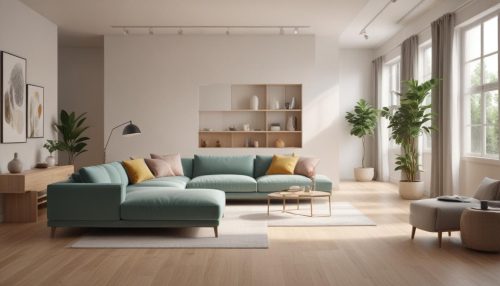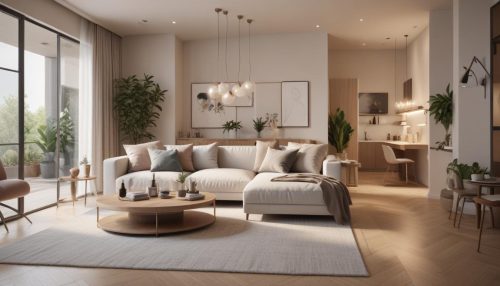Simple Habits That Make Your Home Feel Calmer
Lucas White August 22, 2025
Exploring the calmer home habits, this article reveals simple lifestyle that transform daily living spaces into peaceful sanctuaries. Discover the science and practical steps to create a restful, stress-reducing environment for yourself and loved ones.
Why a Calm Home Matters for Wellness
Daily environments have a profound effect on emotional and mental wellness. Research in environmental psychology consistently finds that cluttered or chaotic spaces can elevate feelings of anxiety and hinder clear thinking (Source: https://www.ncbi.nlm.nih.gov/pmc/articles/PMC5679244/). Creating a peaceful home is not just about aesthetics but about establishing routines and surroundings that support relaxation and self-care. Many people underestimate how soothing scents, natural light, and order can influence mood and even sleep quality. The concept of a sanctuary is deeply ingrained in many cultures, highlighting an innate drive for places that restore the mind and body.
A calm home environment is often associated with improved relationships and healthier daily habits. Family members or roommates, when sharing uncluttered and positive spaces, tend to communicate better and feel more supported. Home isn’t just shelter; it’s the backdrop for nearly every area of personal life including nutrition, productivity, and recreation. People report that a peaceful home helps them decompress after stressful commutes, prompting many to seek out activities like reading, meditation, or craftwork to foster tranquility within their own walls.
In a world of constant digital stimulation, carving out areas for mindfulness is increasingly valuable. Even small lifestyle changes—like turning off notifications after dinner or dedicating a nook for plants—can significantly boost feelings of calm. Many experts recommend starting with one habit at a time, allowing the benefits to build gradually. This approach emphasizes that cultivating serenity is a journey, not an overnight transformation, rooted in consistent, mindful decisions.
The Power of Decluttering and Organization
Decluttering is more than a trending concept; it’s a health-promoting routine that frees up physical and mental space. Studies show that visual clutter can overwhelm the mind, making it harder to relax or concentrate on meaningful activities (Source: https://www.apa.org/news/press/releases/2019/04/residential-clutter). Tackling small projects—such as clearing a coffee table or organizing a closet—builds positive momentum. Many people are surprised to find that decluttering even a single area creates motivation to continue, demonstrating a ripple effect across the entire home.
Organizational systems needn’t be elaborate. Simple methods, like labeled baskets or open shelving, help make tidying effortless and prevent future accumulation of unnecessary items. Extra storage may be tempting, but experts caution that thoughtful downsizing is often more effective than buying more bins. Regular evaluation of household items—with a focus on keeping only what’s used and loved—streamlines routines and shortens tidying time, leaving more room for restorative habits.
Decluttering can be stressful if approached all at once. Experts suggest setting timers or using checklists to break the process into manageable steps. Celebrating small wins, like an orderly desk or neatly stored shoes, reinforces the emotional payoff. For families or housemates, setting shared goals ensures everyone enjoys the benefits of organized spaces. This collaborative spirit also models positive habits for children, who learn the value of caring for their surroundings.
Natural Elements That Soothe the Senses
Bringing nature indoors offers powerful calming effects. Scientific evidence reveals that exposure to plants can lower blood pressure and reduce stress hormones, even within the home (Source: https://www.mdpi.com/1660-4601/17/18/6719). Popular houseplants like pothos, snake plants, or peace lilies are easy to care for and visually pleasing. Even those without a green thumb can benefit from simple arrangements of fresh flowers or sprigs of herbs in the kitchen, which add subtle scents and a connection to the outdoors.
Naturally filtered light has a unique ability to boost mood and regulate sleep-wake cycles. Positioning furniture near windows, choosing light curtains, or using mirrors to reflect sunlight maximizes this benefit. For rooms with limited daylight, full-spectrum bulbs can mimic sunlight and support a brighter, airier atmosphere. Natural textures—like wood, linen, or woven baskets—also help foster coziness and warmth while diminishing the cold feel of synthetic materials.
Sounds and scents shape perceptions of tranquility. Soothing playlists, wind chimes, or gentle white noise devices can mask distractions from outside. Lavender, chamomile, or sandalwood essential oils—used safely—add a sensory anchor for relaxation rituals. Many people choose to develop routines around scent, such as diffusing calming oils before bed or lighting a beeswax candle during evening reading sessions, to create restful cues for the body and mind.
The Role of Mindfulness and Digital Boundaries
Mental calm often begins with intentional routines that disconnect from digital noise. Mindfulness practice—paying attention to the present moment without judgment—can be as simple as breathing exercises or guided meditations at home (Source: https://www.health.harvard.edu/blog/mindfulness-meditation-improves-well-being-201511097486). Studies link regular mindfulness to increased feelings of calm, showing that even five-minute breathing sessions reduce reactivity to daily stress. Creating dedicated spaces—like a meditation pillow or corner nook—encourages follow-through.
Establishing clear digital boundaries is another foundational habit. Devices emit blue light that interferes with natural circadian rhythms; this disruption can impact both relaxation and sleep. Simple changes, such as turning off screens an hour before bedtime or keeping phones out of bedrooms, support deeper rest and a calmer mind. Many families report that device-free dinners or scheduled internet breaks rekindle in-person conversations and opportunities for shared activities, further reinforcing a relaxing atmosphere.
Journaling, mindful walks, or gratitude lists extend mindfulness beyond meditation and help anchor positive thinking. Small rituals, like a daily tea break or mindful breathing before tasks, act as gentle reminders to slow down. Over time, these actions build mental resilience and turn the home into a buffer against the pressures of outside life. Experts recommend experimenting with different techniques until finding those that resonate most with household routines and personalities.
Color, Lighting, and Mood: Blending Science with Style
Color psychology informs many choices in interior design. Research shows that blues and greens evoke calmness, while soft neutrals boost feelings of spaciousness (Source: https://www.sciencedirect.com/science/article/abs/pii/S0360132317302805). By painting walls in restful tones or choosing pastel accents, households can subtly shift the mood of a room. It’s not just about paint—bedding, curtains, and decor also play a role in creating a cohesive, soothing color palette.
Strategic lighting transforms spaces from harsh to inviting. Adjustable fixtures, dimmers, and task lighting allow greater flexibility for different moods and activities. Soft, warm bulbs are well-suited to bedrooms and living rooms, reducing glare and supporting evening wind-down routines. In work areas, balancing ambient and focused light can reduce eye strain and make tasks more pleasant, indirectly lowering daily stress levels.
The interplay between light and color often dictates comfort levels at home. Sheer curtains that diffuse natural light, layered rugs for texture, and the arrangement of lamps at different heights all influence how a space feels. Lighting can also draw attention to art, greenery, or favorite corners, encouraging mindful appreciation throughout the day. By experimenting with these elements, families customize their environments to match their own rhythms and well-being goals.
Sustaining Your Calm Home Habits Daily
Consistency, rather than perfection, determines long-term success in cultivating a peaceful home. Establishing two or three core habits—like nightly tidying or device curfews—lays a reliable foundation. Even when life becomes busy, these anchor routines function as gentle reminders to pause and return to calm, making them especially valuable during transitions or stressful times. Sharing responsibility among household members, if possible, ensures the practice isn’t a burden on one person alone.
Flexibility is essential in habit-building. What works in one season might need adjusting in another; for example, swapping out heavy winter blankets for fresh spring decor or rotating artwork and photos for variety. Regular reflection helps identify clutter triggers, changing family needs, or opportunities to infuse new energy. Approaching each habit as an evolving process prevents burnout and encourages lifelong engagement in maintaining a tranquil home.
Small acts of self-kindness reinforce the spirit behind a calming home. Lighting a favorite candle, playing gentle music, or reading in a cozy chair become more than rituals—they symbolize conscious choices to prioritize peace. These micro-habits add up, making it easier to weather stress and nurture emotional balance day after day. Over time, the home itself becomes a trusted source of comfort and restoration, supporting well-being in subtle but profound ways.
References
1. Chiaravalloti, N.D., & Verrusio, W. (2017). Environmental psychology and quality of life. Retrieved from https://www.ncbi.nlm.nih.gov/pmc/articles/PMC5679244/
2. American Psychological Association. (2019). Residential clutter and subjective well-being. Retrieved from https://www.apa.org/news/press/releases/2019/04/residential-clutter
3. Han, A.R., Kweon, B.S., & Kim, J. (2020). The role of plants in enhancing the indoor environment. Retrieved from https://www.mdpi.com/1660-4601/17/18/6719
4. Harvard Health Publishing. (2015). Mindfulness meditation improves well-being. Retrieved from https://www.health.harvard.edu/blog/mindfulness-meditation-improves-well-being-201511097486
5. Wijk, B.C.M., Berg, A.E.v.d., & Olff, M. (2018). The impact of light and color in creating relaxing environments. Retrieved from https://www.sciencedirect.com/science/article/abs/pii/S0360132317302805
6. National Sleep Foundation. (2022). How light affects our sleep. Retrieved from https://www.sleepfoundation.org/bedroom-environment/light-and-sleep





